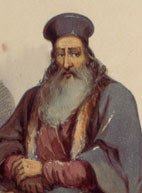What we say, hear and sing in worship shapes our faith. In the case of words, rhythm and rhyme create poetry, clothing the words so they might penetrate deeper into the mind and soul, giving strength to the logos hidden behind the words. In the case of poems, melos (melody) blends with the logos so as to bring us more easily before the Lord, in turn, affecting our whole being through the direct, intimate one-on-one contact with God and persuading us to good works. In short, as St John Chrysostom would write in the fourth century, the poetry (logos) and melody (melos) make the process of prayer and the catechetical word less a chore.
“When God saw that many men were rather indolent, that they came unwillingly to Scriptural readings and did not endure the labor this involves, wishing to make the labor more grateful and to take away the sensation of it, He blended melody with prophecy in order that, delighted by the modulation of the chant, all might with great eagerness give forth sacred hymns to Him. For nothing so uplifts the mind, giving it wings and freeing it from the earth, releasing it from the chains of the body, affecting it with love of wisdom, and causing it to scorn all things pertaining to this life, as modulated melody and the divine chant composed of number” (PG LV, 155-159, from St John Chrysostom’s homily on Psalm XLI).
The strength of the metered word and modulated melody appear at both the most joyous and most difficult, even tragic, points of human existence. When the people of Israel crossed the Red Sea, “then sang Moses and the children of Israel this song unto the Lord, and spake, saying, I will sing unto the Lord, for he hath triumphed gloriously…” (Ex. 15. 1). On the other end of the spectrum of human existence, in the late 1940s, shortly before his death in a Siberian prison camp, a Russian Archpriest by the name of Gregory Petrov composed his own song to the Lord, an Akathist of Thanksgiving, in which, amidst all his personal suffering, his spirit welling up with gratitude, confessed:
“Immortal King of the ages,
Holding within your right hand
all the paths of human life
Through the power of your saving providence,
We thank you for all your acts of goodness,
Manifest and hidden, for the life on earth,
And the heavenly joys
of your kingdom to come.
Extend your mercy also into the future
for us who sing:
Refrain. Glory to you, O God, unto the ages.”
So it is clear that at the point of origin of any divine hymn or sacred musical composition is the relationship of prayer, a dialogue with God, either man reaching out to God or God touching man. The hymn or music is either the believer’s vocal response to contact with the divine or the believer’s attempt to reach out to the divine in thanksgiving, doxology or supplication. Apart from being a means of worship, it is also clear that the root of the rhythm (poetry) and sound (melody) of sacred music is also an inspired expression of faith. A confession of what one believes about God, the Saints, neighbor and the world he or she lives in. As such an expression it is worthy of examination. In time, over the centuries, changes in hymn forms will be related to changes in liturgical development and liturgical worship (practice), evolving especially during times of dynamic social change in the life of the Church, times where the theology (thought)—the perception of how one’s faith is to be lived—is challenged, be it from within or without. Theological and sociological developments interact, leaving some mark on liturgy, whether it be the hymns or their music. This form of looking at liturgical music from the vantage point of its place in the history of liturgy and an expression of social change is a widening of the fields of musicology and theology.
skip to main |
skip to sidebar

Ancient Chant in a Postmodern World
Subscribe Now: standardSmall
Links
About Me

- FRCJT
- I was born in East St Louis, Illinois in 1961 and grew up in South St Louis, Missouri. I abandoned the music program at Southern Illinois University after deciding to study theology. To this end I enrolled at Hellenic College, Holy Cross Greek Orthodox School of Theology and received the BA and MDiv degrees from these schools. From there I received scholarships to complete a doctoral dissertation in Byzantine Musicology at the School of Theology of the National and Capodistrian University of Athens, Greece, from which I received the ThD in the year 2000; my dissertation was published in the Meletai series of the Institute of Byzantine Musicology. Most dear to my heart is the family I have been blessed with: my wife Diann, my daughter, Maria, and one unborn child God decided to keep for Himself. Presently, I live on the island of Aegina with my family and where I presently sit and write my psaltic musings.